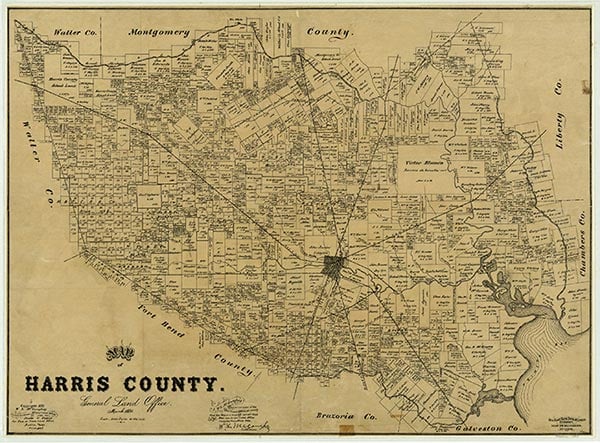Pelly

Pelly, thirty miles east of Houston in southeastern Harris County, received its name from its first mayor and principal landowner, Fred T. Pelly, a native of London. Pelly and his wife, Lucy (Wiggins), owned a seventy-one-acre tract of land near the Goose Creek oilfield. On his land oilfield workers and their families settled after a number of gas explosions and oil-well fires in late 1916. Unable to buy land because of oil leasing activities, the oilfield squatters became renters, and the new community adopted the typical look of a rough and temporary oilfield boomtown. The original settlement along Tabbs Bay was known as Old Town, and the new inland village became Middle Town (later Pelly) in 1917, after Ross S. Sterling, founder of Humble Oil and Refining Company, began developing New Town a mile north alongside his railroad project. When New Town residents decided to incorporate on January 28, 1919, they took the name Goose Creek and asked for a post office. One night they jacked up and moved by wagon the small frame post office in Middle Town, which had been moved there by residents of Old Town. The move was planned and approved but carried out overnight to minimize business interruption. The story was circulated, however, that New Town "vigilantes" had stolen the post office, and over time the story became legend. Fearing it might be devoured by the new settlement, Middle Town incorporated as Pelly on January 19, 1920. At the time of its incorporation, Pelly had its peak population of 7,500. By 1929 the population dropped to 4,000, due to a decrease in oil production. Those who stayed went to work at the new Humble refinery in nearby Baytown and built a permanent community. Reluctant oil companies and landowners finally sold lots to homeowners and businessmen, streets were laid out, and city services furnished. Pine-boarded, single-walled shacks yielded to neat cottages and brick homes, and timid bond issues built schools and paved streets. The oilfield town gained some respectability through the organization of a housing authority, which cleared a slum and provided low-cost housing to its citizens. The community also built a brick two-story city hall and developed a volunteer fire department.
Despite several consolidation attempts the Tri-Cities of Goose Creek, Pelly, and Baytown existed as separate entities until late 1945. Fearful again of being swallowed by its old rival, Goose Creek, which had been annexing territory for five years, Pelly adopted a home-rule charter in December 1945 and immediately annexed the "contiguous and unincorporated" territory of Baytown. A year's court fight ensued over whether a city could annex a water district, since the problem had no precedent. The Texas Supreme Court finally ruled Pelly's action to be legal and in the best interests of the citizens. After many meetings and discussions, consolidation elections were held in both Pelly and Goose Creek on February 15, 1947. Consolidation carried by a large majority, and a straw vote showed most citizens preferred the name Baytown for the new city and a new charter. The question of who was to annex whom was decided by a special federal census in the spring of 1947, which showed that Pelly, now including old Baytown, had a population of 11,030 to Goose Creek's 9,928. At that time Goose Creek was merged with Pelly. In January 24, 1948, a new city charter was approved by the voters. Two days later the city of Pelly formally became the city of Baytown.
Buck A. Young | © TSHA

Adapted from the official Handbook of Texas, a state encyclopedia developed by Texas State Historical Association (TSHA). It is an authoritative source of trusted historical records.

- ✅ Adoption Status:
Belongs to
Pelly is part of or belongs to the following places:
Currently Exists
No
Place type
Pelly is classified as a Town
Associated Names
- (Baytown)
- (Middletown)
Location
Latitude: 29.72522690Longitude: -94.96576040
Has Post Office
No
Is Incorporated
No
